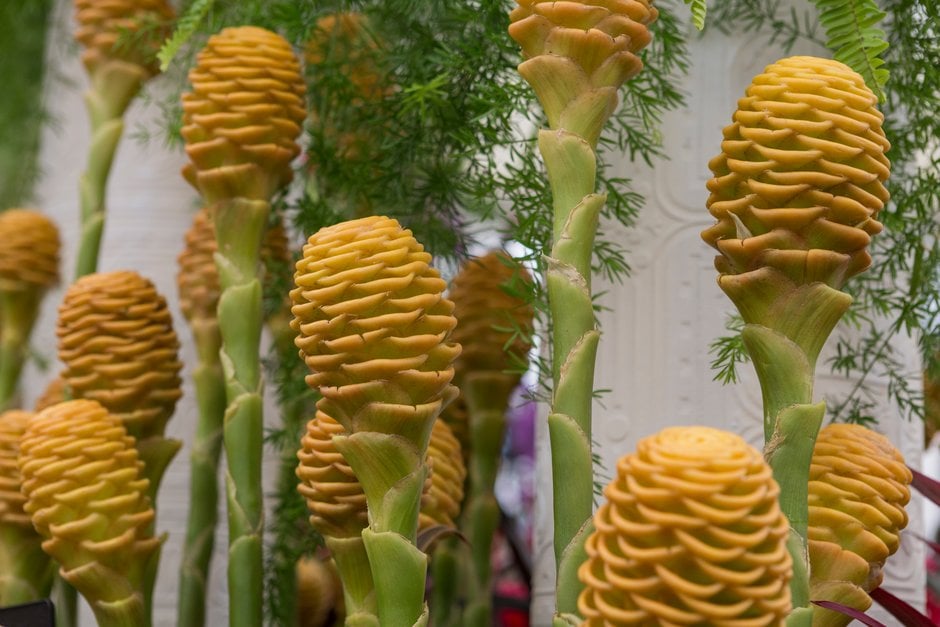Zingiber spectabile
beehive ginger
a rhizomatous perennial with erect, unbranched stems up to 2.5m tall arising from the fleshy rhizomes bearing narrow, lance-shaped leaves. Small, purple and white flowers with yellow spots are borne on stems up to 50cm tall and emerge from pale yellow-orange bracts that overlap to form a cylindrical, beehive-like structure; the bracts may darken with age to orange and red

Size
Ultimate height
2.5–4 metresTime to ultimate height
2–5 yearsUltimate spread
0.5–1 metresGrowing conditions
Moisture
Moist but well–drainedpH
Acid, Alkaline, NeutralColour & scent
| Stem | Flower | Foliage | Fruit | |
| Spring | Green | |||
|---|---|---|---|---|
| Summer | Purple White Yellow | Green | ||
| Autumn | Green | |||
| Winter |
Position
- Full sun
- Partial shade
Aspect
South–facing or West–facing or East–facing
Exposure
Sheltered Hardiness
H1ABotanical details
- Family
- Zingiberaceae
- Native to GB / Ireland
- No
- Foliage
- Deciduous
- Habit
- Columnar upright
- Genus
Zingiber are aromatic rhizomatous perennials with alternate, oblong leaves in two ranks, and cone-like inflorescences with overlapping, sometimes brightly coloured bracts, and 3-petalled flowers
- Name status
Correct
- Plant range
- Malaysia
How to grow
Cultivation
Grow in rich, well-drained, moisture-retentive soil in filtered sunlight and high humidity, either directly in the border of a heated greenhouse, or in a container indoors
Propagation
Propagate by seed or by division of well-established plants in early spring, or by separating and replanting sections of rhizome 15-20cm long in spring or early summer
Suggested planting locations and garden types
- Architectural
- Patio and container plants
- Cut flowers
Pruning
Cut back old stems as they die back in the autumn
Pests
May be susceptible to glasshouse red spider mite under glass
Diseases
Generally disease-free
Get involved
The Royal Horticultural Society is the UK’s leading gardening charity. We aim to enrich everyone’s life through plants, and make the UK a greener and more beautiful place.